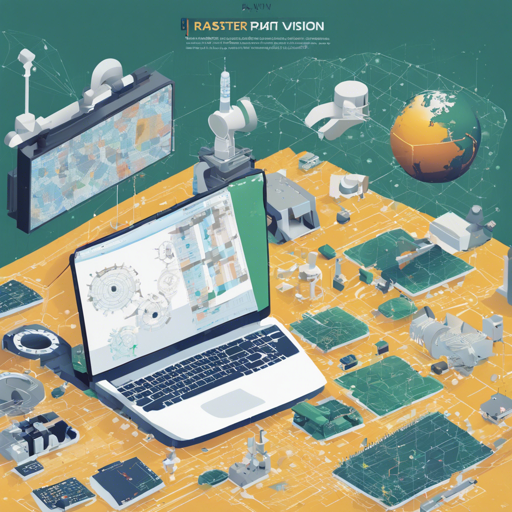Welcome to the exciting world of Raster Vision, an open-source Python library and framework dedicated to building sophisticated computer vision models on large-scale imagery, such as satellite and aerial shots. Whether you’re working with chip classification, object detection, or semantic segmentation, Raster Vision provides the tools you need to tackle geospatial deep learning challenges.
What is Raster Vision?
Raster Vision empowers both novices and experts to engage in deep learning workflows seamlessly. As a library, it offers utility tools for reading geospatial data, training models, and generating predictions. As a low-code framework, it simplifies complex processes, allowing anyone to configure machine learning experiments without needing deep expertise in the field.
Additionally, Raster Vision supports experimentation in the cloud using services like AWS Batch and AWS Sagemaker. Excited to dive in? Let’s go!
Installation Steps
Follow these simple steps to install Raster Vision:
Install via pip
The easiest way to install Raster Vision is through pip:
pip install rastervisionUse Pre-built Docker Image
Alternatively, you can leverage pre-built Docker images available on quay.io. Simply pull the latest version using the suffix, for example, raster-vision:pytorch-latest.
Build Your Own Docker Image
If you prefer building a Docker image from scratch, clone the repository, run the docker build command, and execute the container using docker run.
Usage Examples and Tutorials
For non-developers, using Raster Vision as a low-code framework is very straightforward. You can refer to the Quickstart guide for getting started. There you will find simple configuration steps that lead to effective machine learning experiments.
For developers who want to customize their applications using Raster Vision, begin with the Usage Overview, it outlines how you can take full advantage of the library, before progressing to Basic Concepts and Tutorials.
Troubleshooting Tips
If you encounter issues while working with Raster Vision, here are some common solutions:
- Installation Errors: Ensure that you have the correct version of Python and pip installed. Check if you need specific dependencies for your operating system.
- Docker Issues: If Docker commands are not behaving as expected, ensure you have Docker installed and running. Check the official documentation for troubleshooting Docker-related problems.
- Compatibility Problems: Always check if you’re using compatible versions of Raster Vision and its dependencies. Refer to the detailed documentation for any version conflicts.
For more insights, updates, or to collaborate on AI development projects, stay connected with fxis.ai.
Conclusion
At fxis.ai, we believe that such advancements are crucial for the future of AI, as they enable more comprehensive and effective solutions. Our team is continually exploring new methodologies to push the envelope in artificial intelligence, ensuring that our clients benefit from the latest technological innovations.
Final Thoughts
Raster Vision is your gateway to powerful geospatial deep learning solutions. With a combination of library utilities and low-code capabilities, this tool is designed to unlock your potential in the field of computer vision. Ready to make the leap? Dive into Raster Vision today!

